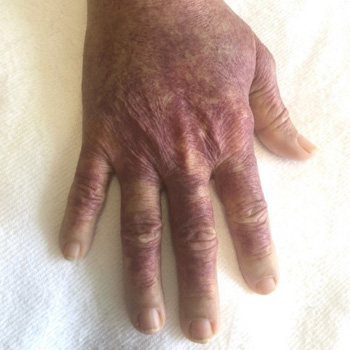Keywords
Rumpel-Leede phenomenon, tourniquet, capillary
Abstract
Rumpel-Leede phenomenon is a rarely diagnosed entity that can be seen in patients following the application of tourniquet-like forces to the extremities. This phenomenon describes petechiae and purpura secondary to venous compression and congestion, with its underlying aetiology involving the fragility of capillary vessels within the dermis. This condition is associated with chronic medical conditions such as diabetes mellitus, hypertension, dyslipidemia, peripheral vascular disease and systemic inflammatory diseases, including infections. In addition, patients with coagulopathy including thrombocytopenia or platelet dysfunction from antiplatelet use, or those with thrombotic thrombocytopenic purpura and idiopathic thrombocytopenic purpura, are predisposed to capillary haemorrhage and petechiae formation. In this report, we present a case of a patient who developed Rumpel-Leede phenomenon following catheterisation of the right radial artery with spontaneous resolution – where only five cases have been reported to date – with the aim to make clinicians aware of this condition and to avoid unnecessary interventions.
References

Views: 593
HTML downloads: 266
PDF downloads: 320
Published:
2023-07-14
Issue:
2023: Vol 10 No 8
(view)










